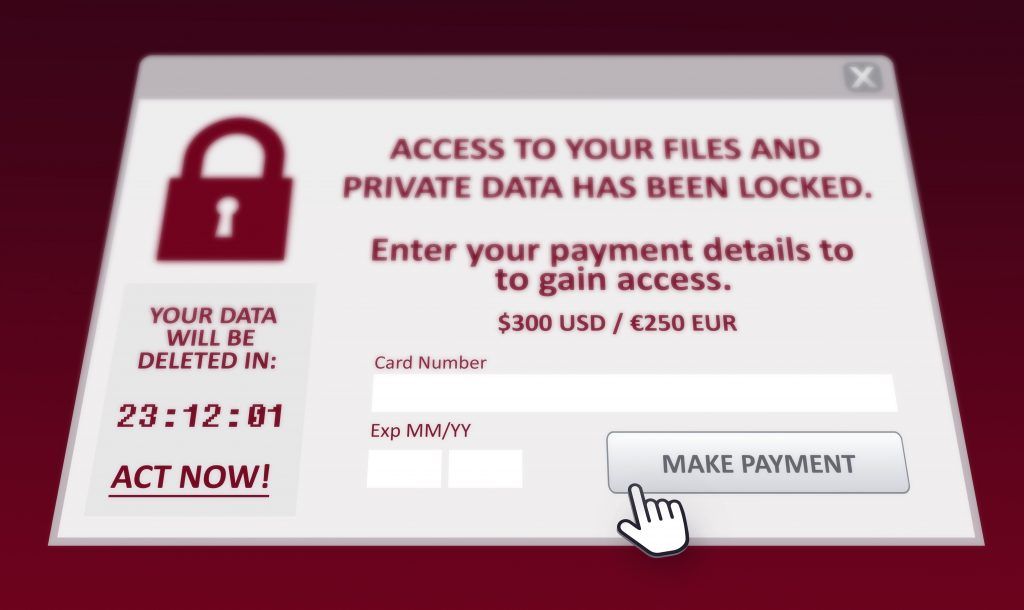Understanding Ransomware & Keeping Your Business Safe

If you’ve seen any of the (MANY) recent reports about ransomware attacks on businesses and their profound effect on the business and its clients, you know that ransomware is a serious danger that your company needs to be prepared to combat. The best defense, as the old adage goes, is a good offense. This has never been truer than when it comes to ransomware. By understanding what ransomware is and creating a security plan in advance, you can save your business’ and clients’ data from a malicious attack.
What is Ransomware?
According to the Cybersecurity and Infrastructure Security Agency (CISA), ransomware is a specific type of malicious software (malware) that doesn’t necessarily take information from your computers or networks by infiltrating your systems. Instead, ransomware creates a block that prevents you from accessing information or systems until you pay a ransom. Many businesses and individuals panic and pay the ransom to get their information back, but there is no guarantee that they’ll actually get access to their information. In most cases, ransomware is spread through links that can be sent out via email, text messages, social media messaging, popup ads, or links embedded in websites. When the link is clicked, the virus goes to work. It’s important to make sure everyone on your system is educated about the potential risk of clicking links from unknown or questionable sources.
What Information Can be Affected by Ransomware?

Ransomware can block access to just about any personal or business information. Your financial or client files, wireless network, Voice over Internet Protocol (VoIP), and even the information from your clients’ website or network can all be blocked by ransomware. Ransomware can spread through computers, mobile devices, and networks.
What Steps Should I Take Right Away to Stay Safe?
Your business should have a plan in place to handle ransomware attacks, and this may require the assistance of a professional network security team. However, you can take the following steps right away reduce your risk for a ransomware attack:
- Educate – everyone who uses a device or otherwise accesses or shares information as part of your network needs to know what ransomware is and what steps they should take to prevent an attack.
- Update Passwords Regularly – at least once a quarter, everyone on the network should change all of their passwords. These passwords should be strong (include multiple character types and not be recognizably linked to the individual). For even better security, consider incorporating multi-factor authentication.
- Backup Data – all data needs to be backed up on individual devices and in multiple locations within the network on a regular basis. This makes it less likely that a ransomware attack will completely prevent you from accessing necessary information.
- Avoid Suspicious Links – the cybercriminals who create ransomware come up with creative ways to convince you to click their links. A recent, noteworthy example is ransomware designed to look like a link that asks you to “click to update your password.” If you haven’t requested a password change, don’t click these links!
- Have a Reputable Antivirus Software – this antivirus software needs to be up-to-date and installed on all workstations, laptops, and mobile devices.
- Keep Systems Updated – the most vulnerable systems are those that are outdated, so make sure all of your systems and software are up to date with the latest patches.
- Segment Networks – keep information separated into segments to make it more difficult for ransomware to infiltrate all of your business data.
- Limit privileges – if employees, clients, or vendors don’t need access to a specific part of your system, don’t give them access. By limiting privileges, you reduce the number of potential access points for ransomware attacks.
What Steps Should I Take Following a Ransomware Attack?

If you’ve already been the victim of a ransomware attack, it’s time to take action. According to the CISA, businesses and individuals should take the following steps after a ransomware attack:
- Ask for help – contact the authorities and your IT security provider or a consultant if you don’t currently work with an IT security provider.
- Isolate – separate any systems or devices that have been impacted to limit the extent of damage.
- Contact clients – if customers, vendors, or others have information on your network that could be impacted, you should get in touch as soon as possible, so they can take steps to protect their information.
- Recover – take steps to recover as much data as possible. If you have backups, make sure that these are protected, and try to resume business processes as soon as is safe.
When Should I Consult with a Professional?
The best time to consult with a professional about ransomware is before an attack. Establishing an effective security and recovery process in advance can save your business from unnecessary future hardship. At IT ArchiTeks, our team of knowledgeable professionals can help you develop a plan to keep your business data and networks safe from cybercriminals. Get started with a call to our team. We’ll answer your questions and help you set up increased security, and we can establish a recovery plan if ransomware attack happens.
The post Understanding Ransomware & Keeping Your Business Safe appeared first on IT ArchiTeks.












